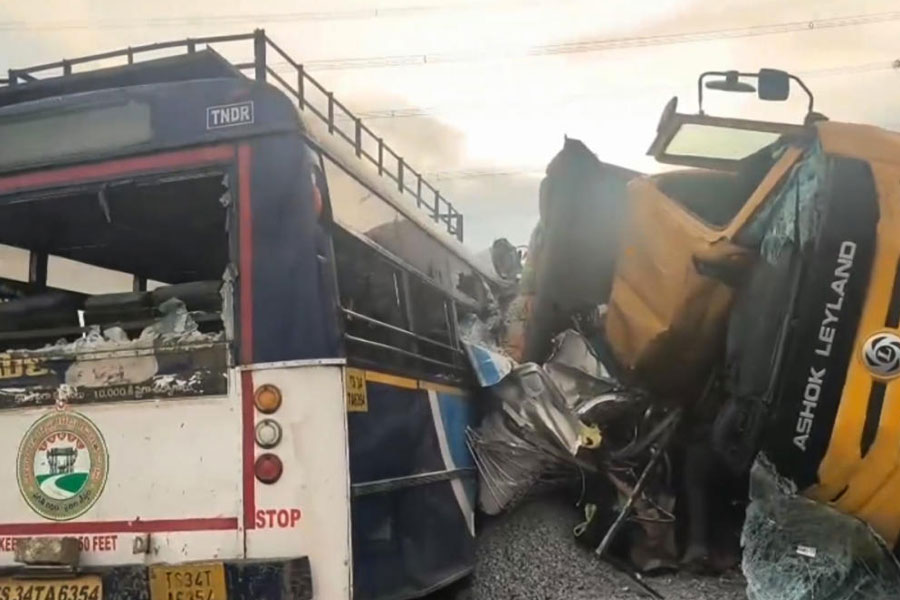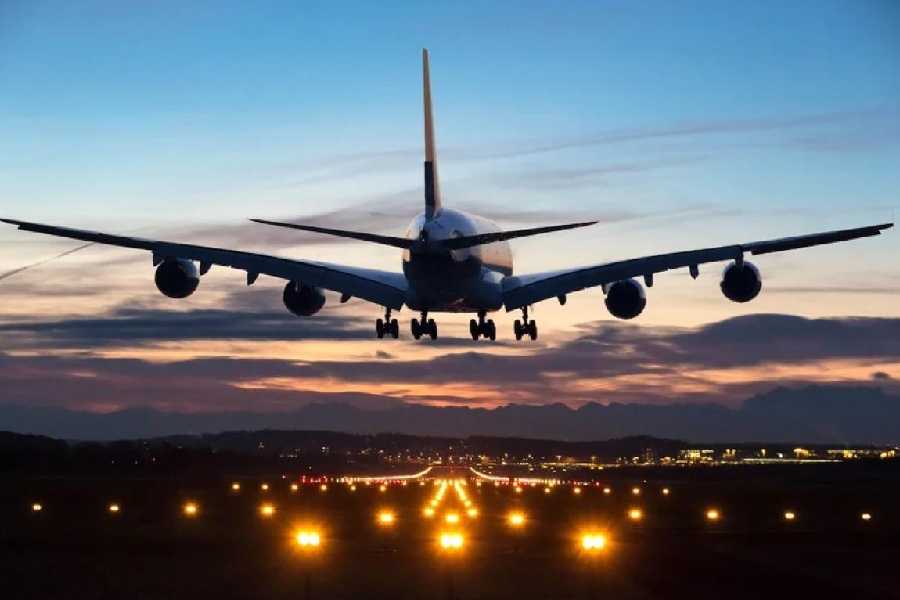A 2.23km flyover coming up over VIP Road since mid-2012 is almost ready for a March inauguration, proving that precise planning and execution are possible in a state notorious for infrastructure projects that look like they will never be completed.
The four-lane flyover between Kestopur and Raghunathpur too has overshot its completion deadline by a year, but that's hardly a blot on an infrastructure landscape littered with instances of projects being delayed by more than four years.
The VIP Road flyover, which promises a faster commute for airport and Ultadanga-bound traffic, comes with bonuses like an increase in the width of the thoroughfare below and subways at Kestopur, Baguiati and Joramandir that have de-cluttered these perennially choked junctions.
Sources said the flyover was likely to be opened to traffic on March 9, subject to approval by the chief minister's office.
Speculation is rife that the government might even advance the inauguration with an eye on the civic election.
Metro highlights how the VIP Road flyover, built by Larsen & Toubro under the Jawaharlal Nehru National Urban Renewal Mission, broke the stranglehold of politics and poor planning that other projects haven't been able to do.
Spot the difference
Scores of shops lining VIP Road near Kestopur and Baguiati were removed without a murmur of protest or a day's disruption, unlike the East-West Metro that is stuck at three places: Brabourne Road, Bowbazar and Duttabad in Salt Lake.
The continuing status quo over land reclamation for the East-West project has led the state government to propose a change in the alignment of the route so that people and establishments blocking the way wouldn't have to be removed.
Encroachment is a disease afflicting several other projects, including the Parama-Park Circus flyover that was supposed to have been ready for traffic by August 2012.
Calcutta High Court has fixed May 2015 as the new deadline for the main trunk of the flyover between Spring Club and Park Circus.
The Vivekananda Road flyover is nearly four years behind schedule and there's little sign of construction being completed even this year.
The proposed Garden Reach flyover between Mominpur and Ramnagar was sanctioned in March last year but work hasn't even started.
The only hitch for the VIP Road flyover was a delay in getting land near Kestopur and shifting the underground high-tension electricity lines. But the delay pales in comparison to what other infrastructure projects have faced.
The cost, originally budgeted at Rs 214 crore, rose to Rs 280 crore mainly because the scope of work increased as the project progressed.
All about planning
A drive down VIP Road is a breeze even before the flyover's inauguration, thanks to the increased width of the carriageway on either flank. The plan to widen VIP Road was apparently integrated into the flyover project so that it served a dual purpose: keep traffic moving during the construction phase and add to infrastructure.
The width of each flank of VIP Road along the length of the flyover has increased from eight to 11 metres, turning it into a six-lane thoroughfare that is in parts better than the EM Bypass.
Practical, long-term solutions to problems that emerged during construction have further helped VIP Road's cause. In Kestopur, two semi-circular passages over the canal were created to lessen the impact on traffic when the crossing had been closed to raise pillars for the flyover.
"These weren't part of the blueprint. We decided to create these passages because diverting traffic would have been a difficult task," said an engineer associated with the project.
The two semi-circular passages that include a bridge each won't be closed to traffic once L&T wraps up the project. "These are extra assets that citizens will continue to enjoy," the engineer said.
As and when traffic needed to be restricted or diverted along a stretch, workers of the construction company helped ease the pressure. Cranes with long necks and hydraulic workstations were part of the equipment that allowed engineers and workers to build the flyover with minimal disruption.
Sources attributed the success of the project to effective planning and risk management along with a stable cash flow. The government's support, sorely lacking in a couple of other projects, was also a factor.
An official involved with the project said L&T was able to procure materials whenever needed and the government made sure payments weren't delayed.
About 15,000 tonnes of steel were used in the construction flyover.
"We picked out the risks associated with the project right at the beginning and addressed them. We prepared the work schedule in a way that our machinery didn't stay idle," said Parikshit Guha, cluster head (eastern region) at L&T Infrastructure. "We engaged as many as nine contractors for steel fabrication. This helped us avoid loss of mandays and time."
Fringe benefits
Traffic snarls at Kestopur and Baguiati were once a recurring nightmare for anyone using VIP Road. The fear of missing a flight if you take VIP Road at any time of day is a thing of the past.
Free U-turns at every crossing are barred and the carriageway is wide enough to easily accommodate three large vehicles running parallel on either flank.
Remodelled and reconfigured traffic signals at Kestopur, Baguiati and Joramandir have also contributed to the ease of commuting through what is back to being the fastest route to the airport.
The concern
If there has been a discordant note, it has come from residents worried about their safety because of vehicles travelling at speed down the widened corridor.
"Earlier, the service roads were hardly used by vehicles and pedestrians could walk there safely. But now cars move at speed along the service road.
Since there is no pavement, pedestrians have to walk through the service road at risk to their lives," said Shyamal Banerjee, who lives in an apartment at Joramandir.
Some people fear that the airport-bound flank opposite Big Bazaar will become snarl-prone once the flyover opens. "Traffic racing down the flyover will merge with vehicles on VIP Road. It will be a bottleneck for sure," said a resident of Raghunathpur, fast becoming a business hub.











